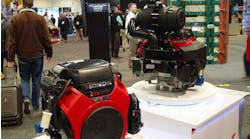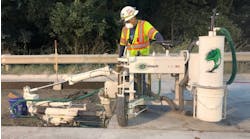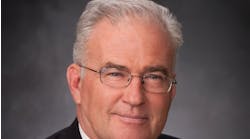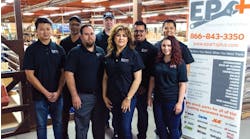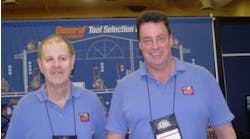One of the mottos of Mr. JCB, Joseph Cyril Bamford, was “never be satisfied.” Even if you think you’re the best, always be trying to improve. One visit to the JCB factory in Rocester, Staffordshire, England, and it becomes immediately evident that JCB — 63 years after Bamford began it in a tool shed where he engineered the company’s first machine — is not resting on its laurels. The company’s 17 new models presented at ConExpo in Las Vegas reflect JCB’s efforts to continually improve on its already high standards.
RER visited JCB’s headquarters in the United Kingdom and observed firsthand JCB’s commitment to customer service and technical and engineering excellence at its sprawling factory, parts distribution center, engine plant and other facilities in the Midlands region of England. JCB is proud of its customer service, its ability to support customers even in remote areas of the world with 24-hour parts delivery and 24/7 product support. JCB has 17 plants on four continents: 10 in the U.K.; three in India and others in the United States, China, Germany and Brazil.
Also clearly evident is JCB’s single-minded pursuit of excellence. “This is the only business we’re in,” said JCB’s CEO John Patterson, a 37-year-veteran of the company. “We don’t have oil business, we don’t have railway business, we don’t make cars or anything else. If we fail at this, we are finished. We can’t afford to fail.”
Coming off another record sales years, JCB is driven to continue to grow in the global marketplace. JCB is strongly committed to growing its distribution network, concentrating primarily on entrepreneurial independents that are dedicated JCB dealers, rather than multi-line.
“We need to expand our dealer network,” said Patterson “We would love to be doubling our network over the next four or five years.” Expecting significant growth in the compact equipment market, Patterson envisions having dealers that specialize in that product segment, with others taking on the broader JCB range.
And a broad range it is. “We produce 280 different models in different families of products,” Patterson said. “Families” include broad groups such as skid-steer loaders, mini-excavators, backhoes, telehandlers and excavators. The company also makes landscaping tractors, industrial and rough-terrain forklifts, compaction equipment, tracked and wheeled excavators, loading shovels, articulated dump trucks and more.
In the backhoe segment, JCB is introducing its Midi CX, a compact machine positioned between the skid-steer 1CX and all-wheel-steer 2CX. The unit has a re-designed air-conditioned cab, and JCB’s Smooth Ride System, which allows the front loader arms to float while traveling, reducing bounce and increasing load retention.
The 3Cx backhoe loader’s revised gearing enables the unit to achieve road speed of 22 miles per hour, with new servo brakes. Redesigned loader geometry provides greater dump angles and roll back for improved material retention, while V-shaped side panels facilitate carrying lengths of pipe. A Tier-III DieselMax engine is EPA- and CARB-compliant. Backhoe bucket breakout for the 3CX-14 increases its weight capacity 18 percent to 13,701 pounds, and JCB increased dipper arm breakout 10 percent, with boomlift capacities up 10 percent as well. Precision controls reduce trenching cycle times 9 percent.
The 3CX and 4CX have improved air-conditioning and a 25-percent larger operator’s seat.
Long a major player and one of the early pioneers of telescopic handlers, JCB is introducing the first four models in a new range of high-boom lift-and-place Loadall telescopic handler, designed to meet the specific needs of U.S. contractors — particularly framers, roofers, steel erectors, masons and general contractors — and rental companies. The high-boom Loadalls feature larger cabs, side-mounted Tier III-compliant engines, servo hydraulic control levers and rear-axle stabilization on all but the smallest models.
The Loadall 506-36, which replaces an earlier version, provides a lift capacity of 6,000 pounds and a working height of 36 feet. The 507-42 provides 7,000 pounds lift capacity and a working lift height of 42 feet, while the 509-42 has a 42-foot lift height with lift capacity of 9,000 pounds. The 510-56 has a 10,000-pound lift capacity and a working height of 56 feet.
The new telehandlers will be manufactured at JCB’s Savannah, Ga., plant.
JCB is also expanding its range of JS tracked excavators with three new machines. The 63,945-pound JS290, the 79,380-pound JS360 and 114,660-pound JS520 were exhibited at ConExpo. The units are powered by Isuzu 6-cylinder Tier III-compliant engines.
JCB manufacturers its own axles and transmissions, most of its own components and cabs, as well as a growing number of its engines. The company is unique in that it carries no debt. As Patterson said, “If we don’t have the money for something, we don’t buy it.” Given its growing market share around the world, it manages to still buy what it needs and more.

